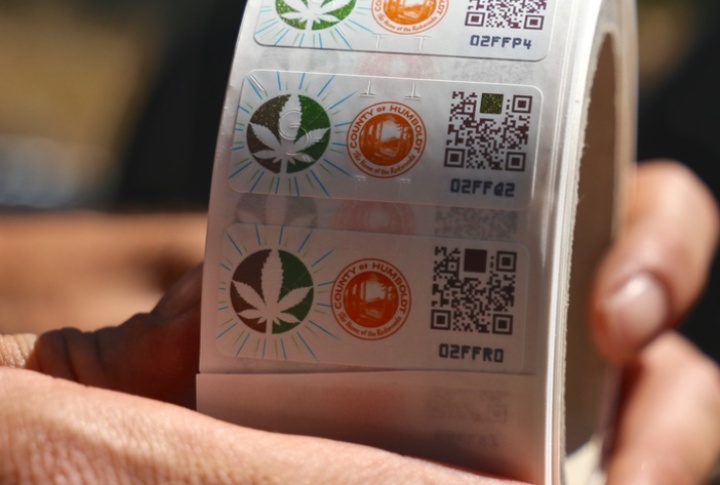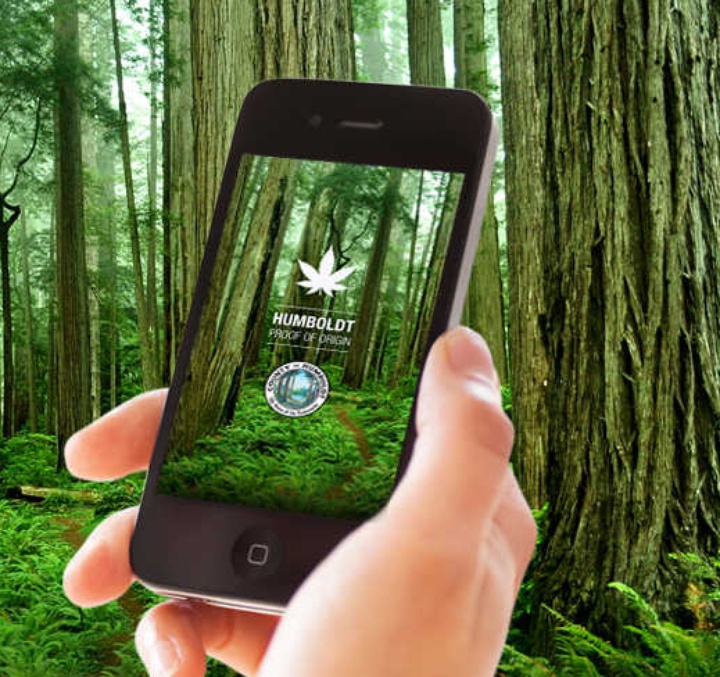
QR codes on the county’s track-and-trace labels allow consumers, vendors and regulators to follow the product through every step of the supply chain. | File photo by Andrew Goff.
With a successful pilot program about to wrap up, Humboldt County is looking to expand its innovative Medical Cannabis Track & Trace Program, which is designed to allow consumers, regulators and law enforcement to follow medical marijuana through every step of the supply chain, from the garden where it was grown to the dispensary where it gets sold.
The county launched the pilot program back in March, enlisting SICPA Security LLC to work with the Agricultural Commissioner’s Office. Together they developed the methodology and invited qualified industry workers to participate. The pilot program remains in effect, with 35 registered grow sites and participation from 10 cultivators (outdoor, indoor, and mixed), four manufacturers and wholesalers, and five dispensaries. (You can read about some of them here.)

Image of the track and trace app, as featured on humboldtorigin.org.
As showcased on a PBS NewsHour segment Thursday night, the program employs “counterfeit-proof” labels with QR codes that get applied to packaged weed. Through the county-run website humboldtorigin.org, patients and dispensaries can get information about the product’s origin, the people who grew it and its lab testing results.
Not only does the program allow participants to monitor the supply chain, it also helps the local branding effort by offering proof of origin — a guarantee that products labeled “Humboldt grown” were indeed cultivated in our renowned region.
As of Dec. 12, more than 22,000 stamps had been applied to 1,100 pounds of verified Humboldt County medical cannabis, according to a staff report. The county-run website humboIdtorigin.org has received 1,500 hits, and a pilot project phone app that allows patients to verify their medical weed has been used more than 500 times.
The Track and Trace pilot project is scheduled to wrap up by the end of February, and at Tuesday’s Board of Supervisors meeting the supes will consider expanding it countywide, making available to all applicants and permit holders in compliance with the county’s Medical Marijuana Land Use Ordinance.
The City of Eureka, meanwhile, wants to start its own track and trace program, integrated with the county’s.
Supervisors are being asked to approve a request for proposals (RFP) from vendors hoping to operate the program. County staff says there’s been plenty of demand in the industry.
“The Commissioner’s Office has received a significant number of requests from producers, cooperatives, and grower representatives requesting to participate in the pilot project because of the ‘proof of origin’ branding offered by the program,” the staff report says. In other words, the “Humboldt” weed-branding effort is poised for a major expansion thanks to the county government, of all things.
The program is expected to be fully funded through fees charged to the participants. It also allows small-scale growers to brand their product as “artisanal,” with an official stamp issued by the county.
In order to be verified as “artisanal” a grower has to meet these criteria:
- The cultivation area must be 3,000 square feet or smaller.
- The grow must be operated by someone who holds a county permit and state license and who lives on the same parcel as the cultivation site.
- The weed must be grown exclusively with natural light.
- The product must meet organic certification standards.
If you want more info on the Track and Trace program and its proposed expansion, you can read through the staff report here. The Board of Supervisors meeting — the first of 2017 and the first for newly elected Third District Supervisor Mike Wilson — starts at 9 a.m. in supervisor’s chambers at the Humboldt County Courthouse.
CLICK TO MANAGE